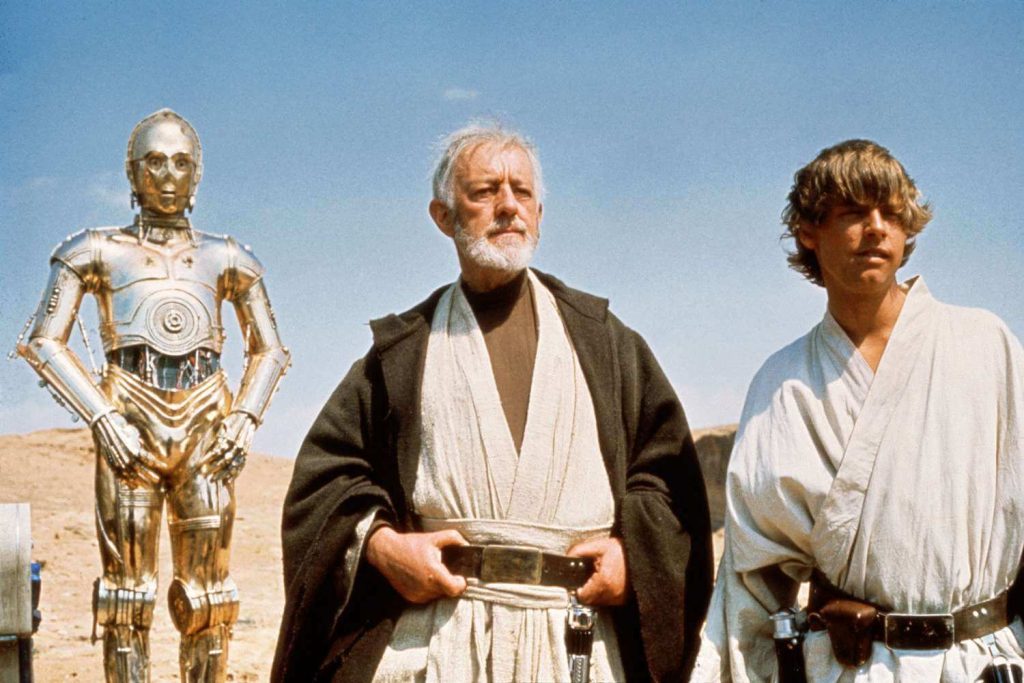World News
The Untold Obi-Wan Kenobi Twist: George Lucas’s Original Vision for The Phantom Menace
The Mystery Behind the Phantom Menace Twist
In the vast world of Star Wars lore, fans have come to know Obi-Wan Kenobi as the wise and seasoned Jedi who guides Luke Skywalker on his journey. Yet, in an early draft of The Phantom Menace, George Lucas had envisioned a different path for Obi-Wan’s character that would have shifted the entire narrative arc of the prequels. Originally, Lucas considered introducing a plot twist where the beloved Jedi Master Qui-Gon Jinn would take on the name “Obi-Wan Kenobi” after the death of his master. In this version, it would have been Qui-Gon, played by Liam Neeson, who was destined to evolve into the Obi-Wan we see in the original Star Wars trilogy. However, as production continued, Lucas made the decision to cut this twist, retaining the traditional narrative of Ewan McGregor as the younger Obi-Wan. The twist, while ultimately abandoned, sheds light on Lucas’s creative process and the potential depth he initially sought for these iconic characters.

Lucas’s Vision: Obi-Wan as a Legacy Rather Than a Single Character
Lucas’s idea to have Qui-Gon Jinn take on the name Obi-Wan Kenobi could have brought an intriguing layer to Star Wars mythology, one that might have suggested a lineage of Jedi bearing the name Obi-Wan. This concept would have redefined how audiences perceive the character, transforming Obi-Wan from a single individual to a symbolic identity passed down from master to apprentice. This approach would have aligned with classic storytelling themes in myth and legend, where certain names or titles are bestowed upon individuals to carry on a legacy. By casting Qui-Gon as the eventual “Obi-Wan,” Lucas’s early narrative sought to show the sacrifices made by Jedi and how their identities evolve in service to the Force. The choice to ultimately keep Obi-Wan as a singular figure allowed for greater clarity in character continuity but also preserved a stronger sense of individual growth for Ewan McGregor’s portrayal, giving the character a more personal and linear journey.
Continuity and Character Identity: Why Lucas Chose to Simplify the Story
When Lucas ultimately chose to forgo the twist, it became clear that the priority was to ensure continuity and accessibility for audiences. The Star Wars prequels were already expanding on complex lore, introducing new characters, and filling in decades of backstory. Adding a twist where Qui-Gon becomes Obi-Wan could have been difficult to follow, especially for viewers who had known Obi-Wan solely as the wise Jedi portrayed by Alec Guinness in the original trilogy. By simplifying the story and establishing Ewan McGregor’s character as the young Obi-Wan from the beginning, Lucas maintained a straightforward link to the established story and character arc. The choice streamlined the narrative, allowing fans to connect with a consistent version of Obi-Wan who experiences his own challenges and growth across the films, ultimately becoming the mentor we see in A New Hope.

The Impact of Character Relationships in the Prequels
The original twist involving Qui-Gon taking on Obi-Wan’s name would have significantly altered the dynamic between master and apprentice in The Phantom Menace. As it stands, the relationship between Qui-Gon Jinn and the young Obi-Wan Kenobi is one of mentorship and guidance, with Qui-Gon’s unconventional approach to the Jedi Code leaving a lasting impression on his apprentice. If Qui-Gon were intended to become “Obi-Wan,” it would have redefined his role and impact, shifting the focus away from his mentorship and placing greater emphasis on the idea of inherited identity. The actual portrayal, where Qui-Gon’s death profoundly influences Obi-Wan’s commitment to training Anakin Skywalker, ultimately allows Obi-Wan to carry forward his master’s beliefs and ideals. This focus on mentorship, legacy, and personal growth in the Jedi Order adds emotional weight to Obi-Wan’s journey and strengthens the prequels’ core themes.
The Legacy of Lucas’s Decisions on Star Wars Canon
By maintaining Obi-Wan Kenobi as a single, linear character across both the prequels and the original trilogy, George Lucas preserved the integrity and continuity of Star Wars canon, a decision that has resonated with fans across generations. The choice to establish Obi-Wan as a unique, evolving individual rather than a symbolic name passed down between Jedi allowed the character to become an anchor in the Star Wars narrative, guiding viewers through the rise and fall of the Jedi Order and into the era of the Rebellion. While the original twist remains a fascinating “what if” scenario, Lucas’s final decision underscores his understanding of Star Wars as a mythos rooted in personal journeys and growth. By allowing Obi-Wan’s character to develop independently, Lucas solidified his place in the franchise’s legacy, ensuring that the character’s influence would continue to be felt throughout the expanding galaxy.
From dragontrendtees


